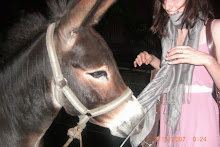Now, as far as I could remember, I had never seen anything other than mallards and Canadian geese at this pond. It's right in front of my high school, so I spent a lot of time looking at it. To be fair, I wasn't as interested in identifying birds in high school, but I would've been able to spot a heron. My mother and father often jog or walk around the pond (exactly .6 miles in circumference, it was carefully measured for track practice), and this was the first time they had seen one too. My mother reported that she had been seeing a cormorant in the past 2 weeks, but only recently.
I went back the next morning with my brother, Jamie, and we saw the cormorant was sitting right on a pipe that stuck above the water, about 10 feet out from the shore. Just then, I saw a belted kingfisher fly from one tree to another. This was the first time I have ever seen and identified a kingfisher, so I was very excited.
Belted Kingfisher:
Just as I was riding high on my kingfisher sighting, my brother remarked, "Don't you remember the time on Martha's Vineyard I caught a kingfisher that had swallowed a fish hook and took it to the Audubon society to save it? Oh, I guess you weren't there." My brother is friend to all creatures.
We walked around the pond, looking for the heron, and instead stumbled up my favorite lil' guy in the whole world - a black-crowned night-heron! This was a juvenile, mostly brown with white flecks. He was on this tiny island that's about 5 feet from the shore, just sitting on a fallen branch that hung out over the water.
My brother agreed with me that these night herons were like the bunny rabbits of the bird world. Extremely huggable.
Oh yeah, there were also hooded mergansers. Those have definitely never been in the pond before this year.
Hooded Merganser:
For Christmas, my father gave me a high-powered scope and tripod, so I feel like a real bonafide birder now. I can't wait to impress other birders with my high-tech equipment.
On Christmas day, I went back to the pond with my parents to test out the scope. I tried taking some pictures by "digi-scoping" (sticking my digital camera up to the eyepiece of the scope), which I had heard worked quite well. I didn't have great results, but I think it might take patience and a better camera.
After the pond, my parents and I traveled to another pond in Belmont, where we saw a bunch of mallards and one long domestic white duck. The domestic white duck was being followed by two male mallards that had very pale green heads. I am pretty sure that the domestic duck must've mated with a mallard and produced a hybrid offspring.
I need to look into this more to see if this is a common phenomenon.
Also, near the mallard pond, we saw two huge red-tailed hawks.
Christmas was huge.



